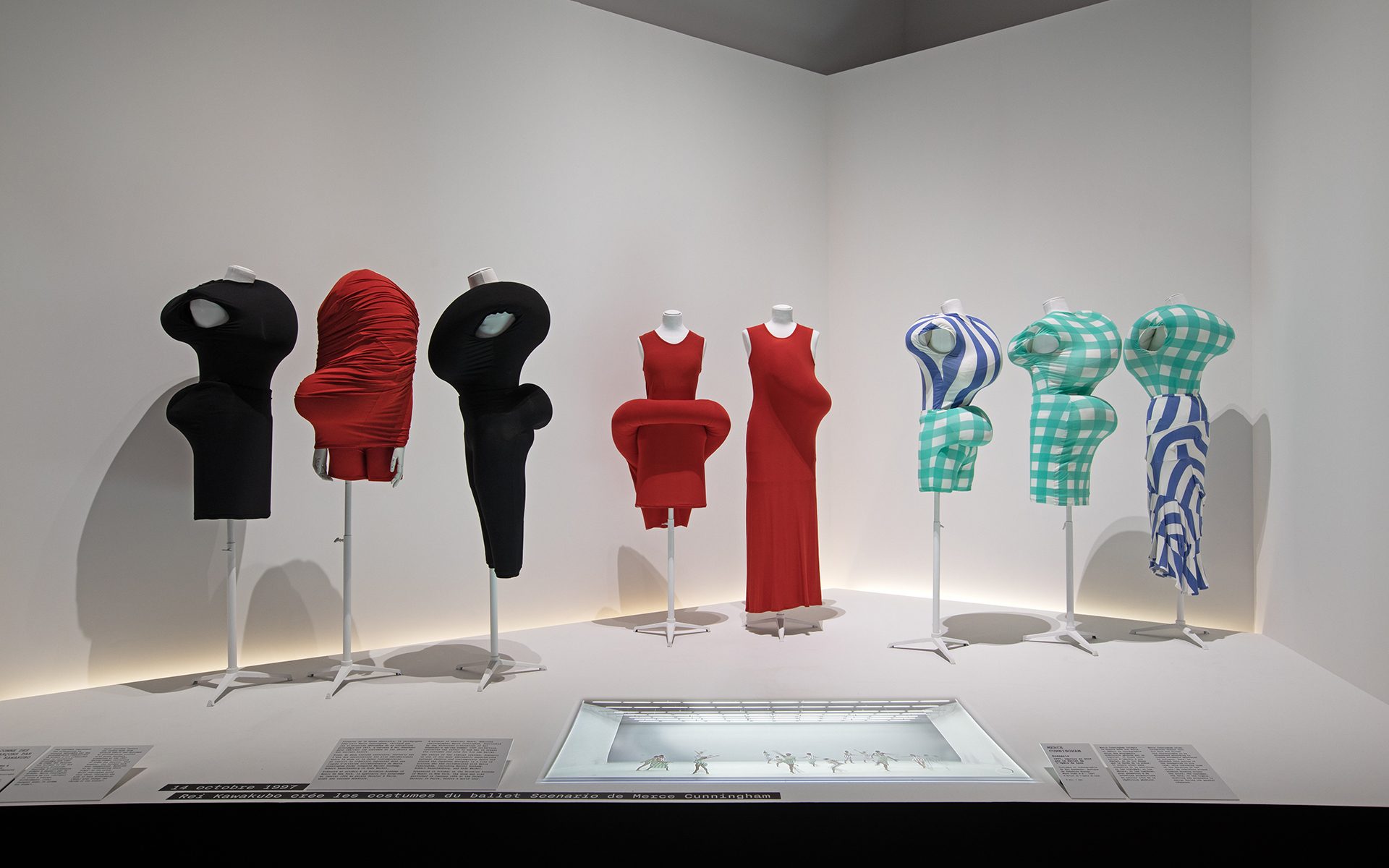

Why a Paris Exhibition Dedicated to ’90s Fashion Is the Most Coveted Ticket In Town
On view through July 16 at Palais Galliera, “1997 Fashion Big Bang” features Alexander McQueen’s first couture collection for Givenchy

Christian Dior by John Galliano, "Kusudi" and "Kitu" Haute Couture Spring-Summer 1997 dresses. Photo: Peter Lindbergh
The year 1997 might not be one you remember particularly well—unless, that is, you were deeply involved in fashion. In that case, it was the year that Alexander McQueen went to Givenchy and John Galliano to Dior. Jean Paul Gaultier launched his first couture collection. Rei Kawakubo gave the models humps and bumps at Comme des Garçons, and Ann Demeulemeester paid tribute to Patti Smith for the entirety of a runway show.
Vogue Paris found it all so exciting that it hailed the moment “Le Big Bang” on its March cover, and matched the headline to a model almost disappearing inside the orange and yellow ruffled extravagance of an overwrought Galliano ball gown. Along with the death of Gianni Versace, the publication of the first Harry Potter novel, the investiture of Michael Kors at Celine (indeed, times have changed), and Steve Jobbs’ return to Apple, it all happened in 1997.
Alexandre Samson, a young Parisian curator, was just seven years old at the time. With the advantage of canny millennial hindsight, he has created “1997 Fashion Big Bang,” an exhibition at Paris’s dedicated fashion museum, the Palais Galliera, which takes this single year and proclaims it the precursor of fashion today.
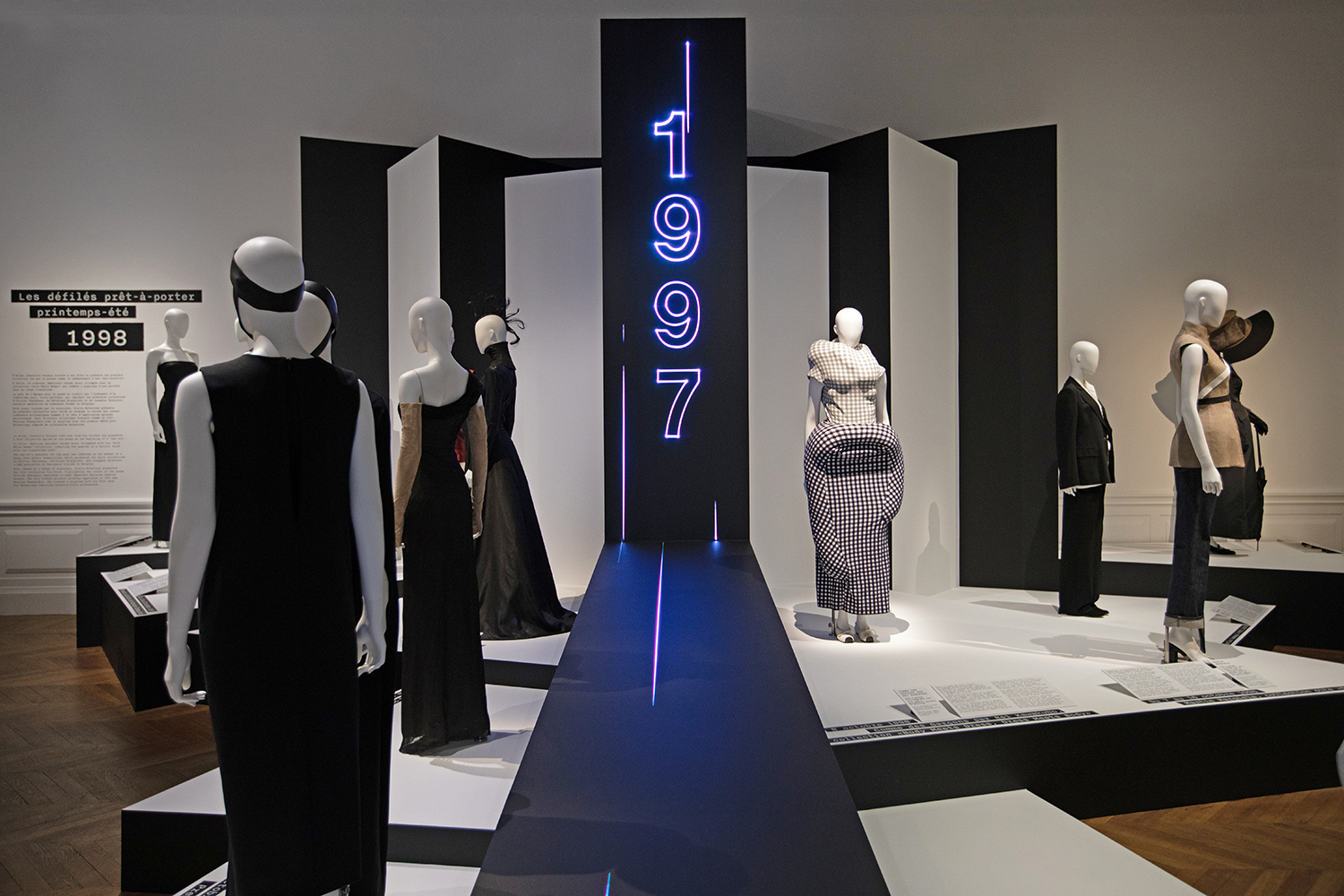
Installation view of “1997 Fashion Big Bang” at the Palais Galliera. Photo: © Gautier Deblonde
It’s a very clever insight, which starts its timeline in October 1996 with the staggering catwalk appearance of Tom Ford’s raunchy GG-backed g-string for Gucci and ends with the extraordinarily sedate advent of Nicolas Ghesquière at Balenciaga in the form of a stunning black robe that wouldn’t look out of place on a well-dressed nun. Along the way, Donatella Versace enters the picture, Bill Clinton laments the glamorization of drugs following the death of fashion photographer Davide Sorrenti, and the concept store Colette opens in Paris to unite fashion, art, design, and food and to advance the aesthetic appeal of the trainer and the sports watch.
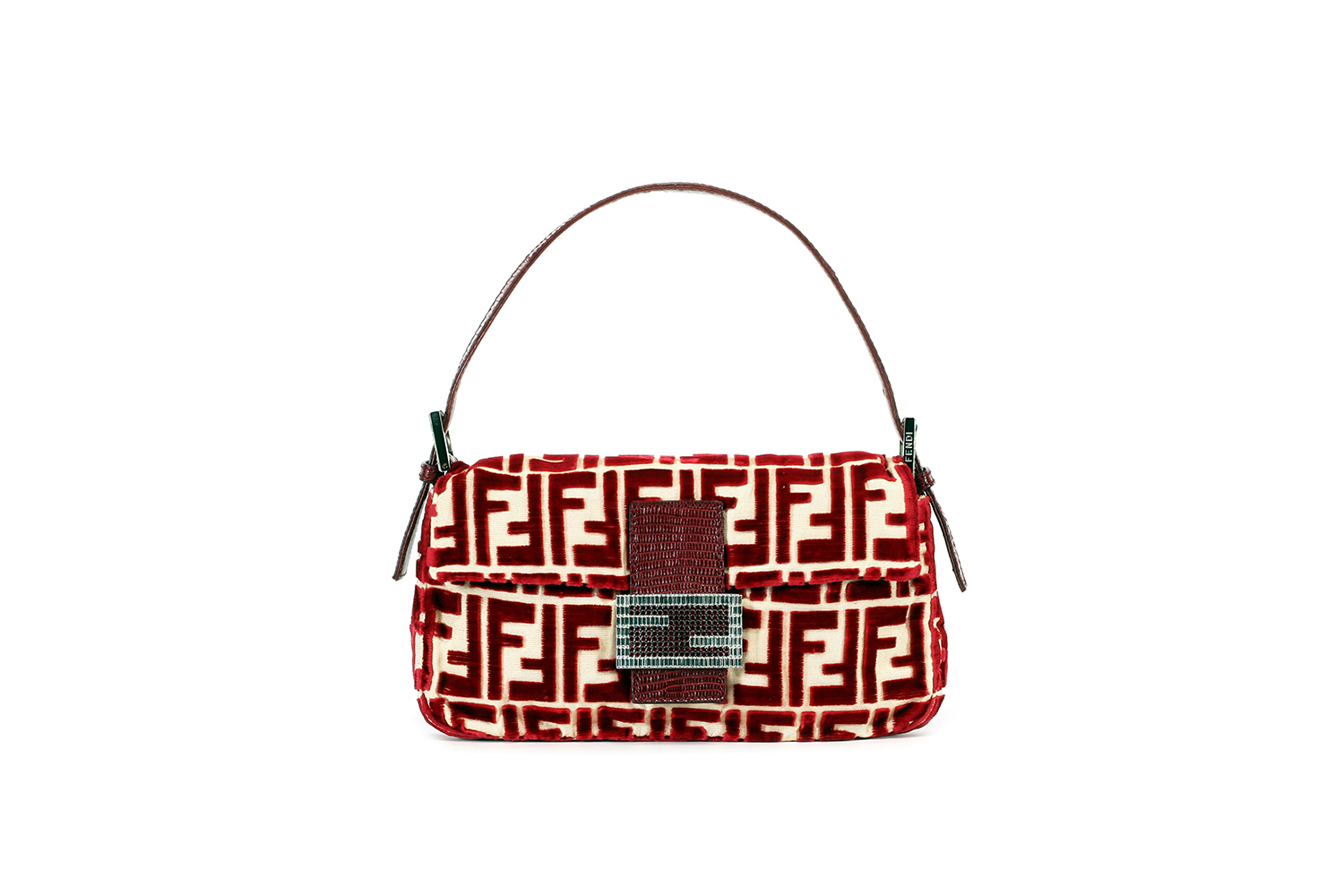
Fendi, Baguette bag, 1997 Photo: Courtesy of Fendi
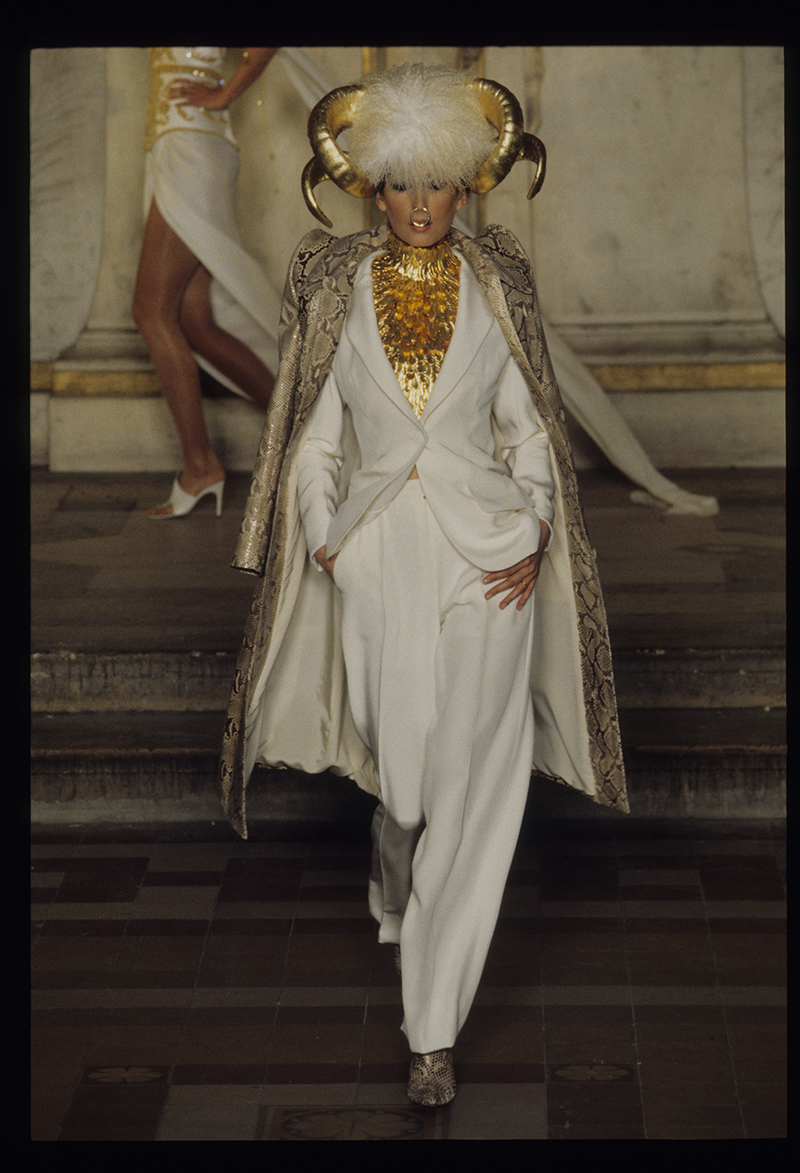
Givenchy by Alexander McQueen, haute couture Spring-Summer 1997 ensemble, The search of the Golden Fleece collection. Photo: Vogue Runway / Condé Nast Archives. © Condé Nast
“As soon as I started my research, it felt like things happened one day after another,” says Samson, who is dressed in carefully composed Comme des Garçons. “But bearing in mind this was still pre-digital, it’s people’s authentic creativity on show here. It’s not about merchandising; it’s about innovation.” He points out the first Fendi baguette, produced in 1997. “It went pretty much un-noticed,” says Samson, “and into the private sale that the fashion editors get invited to.” Subsequently snapped up (at vastly reduced prices) by these women of influence, the Baguette inadvertently became the bag of the decade. It practically invented the waiting list.
“It’s people’s authentic creativity on show here. It’s not about merchandising; it’s about innovation”
Alexandre Samson
While it is fascinating to see McQueen’s first couture collection for Givenchy, it’s his second that stands out, first seen on July 7, 1997. Drawing inspiration from Mary Shelley’s Frankenstein and Angela Carter’s The Bloody Chamber, among other macabre jumping off points, it offers the genius combination of sexy tailoring and exquisite gothic detail that went on to mark McQueen’s success.

Jean-Charles de Castelbajac, bishops' robes, designed for the closing mass of the World Youth Day, Summer 1997. Photo: Antonio Ribeiro / GAMMA RAPHO
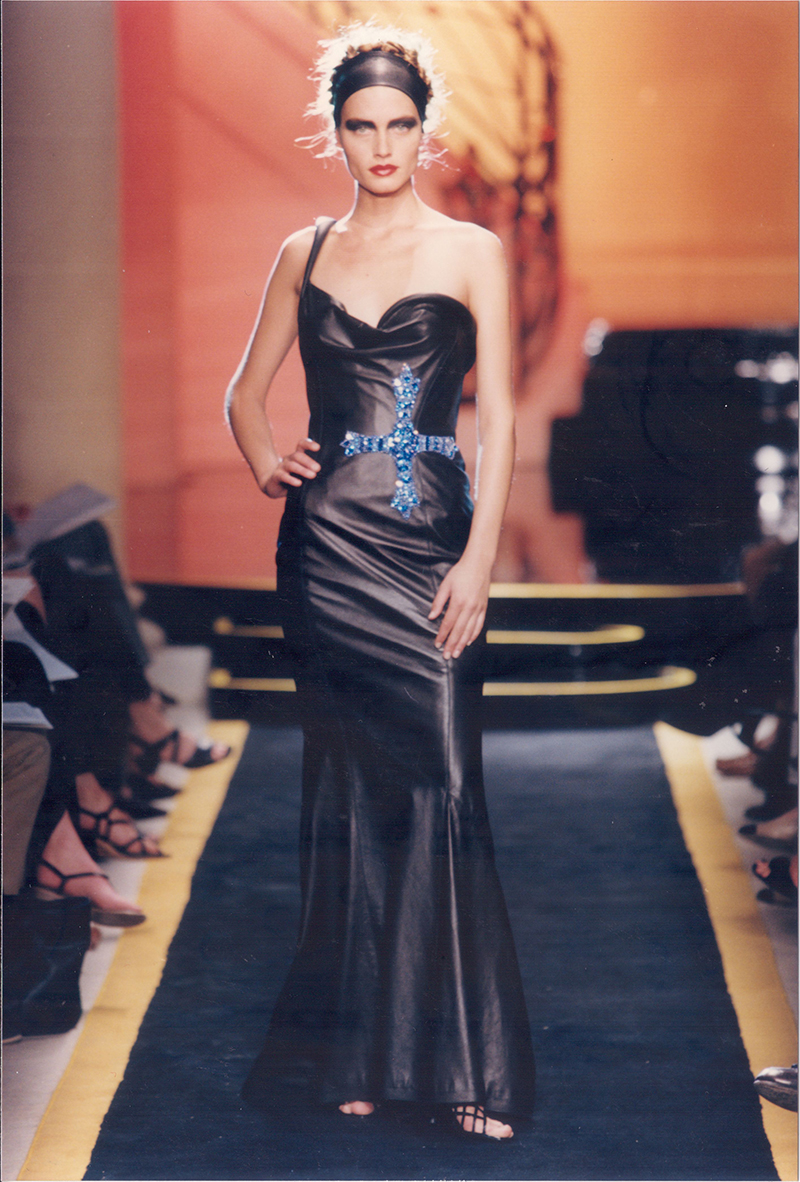
Model Amber Valletta wearing a Versace haute couture dress, Autumn-Winter 1997, last collection of Gianni Versace. Photo: Courtesy of Versace
It’s also satisfying to note the transition of Kawakubo’s critical body bump collection of October 1996 (she was railing against the disappointment of high-street fashion’s lack of vision and bodily interrogation) into costumes for a Merce Cunningham ballet a year later. And a moment of pure joy emerges when Jean-Charles de Castelbajac designs the chasuble for Pope John Paul II when he visits Paris in August 1997. Arrayed, along with every member of the clergy, in a white raiment adorned with a dramatic rainbow stripe, it looks more like Pope-ish Pride than the World Youth Day it was intended as.
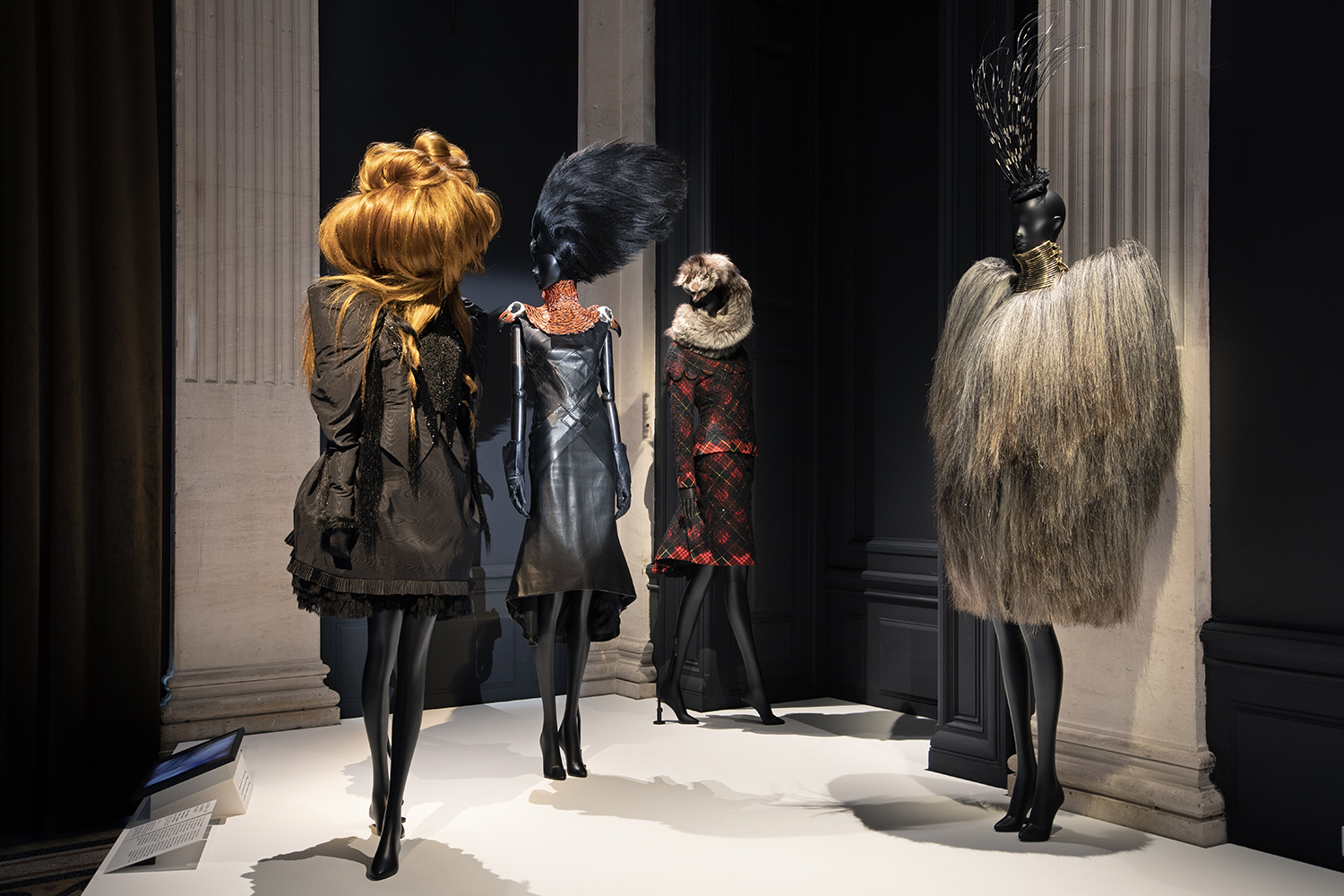
Installation view of “1997 Fashion Big Bang” at the Palais Galliera. Photo: © Gautier Deblonde
But most of all we see the long march of big fashion taking off. With the induction of McQueen and Galliano in historic French fashion houses by Bernard Arnault, and with Ford and Gucci acquired by François-Henri Pinault at PPR, later to become Kering, the luxury business was about to become a vast and global industry. More than 25 years later, days of 1997 seem like a world away, a time of small production and gorgeous designer dreams. We all know what’s happened to the market for trainers and techy watches since—and sadly, what happened to McQueen and Galliano, too—but in this exhibition, 1997 is as fashionable as that year’s top melody, “Something About the Way You Look Tonight.”
“1997 Fashion Big Bang” is on view at the Palais Galliera in Paris through July 16.






